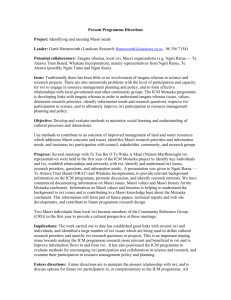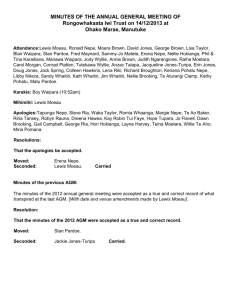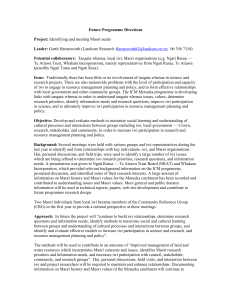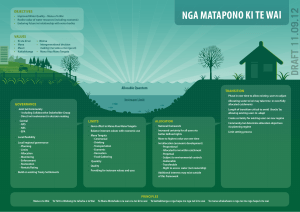2013 soil sampling instructions.
advertisement
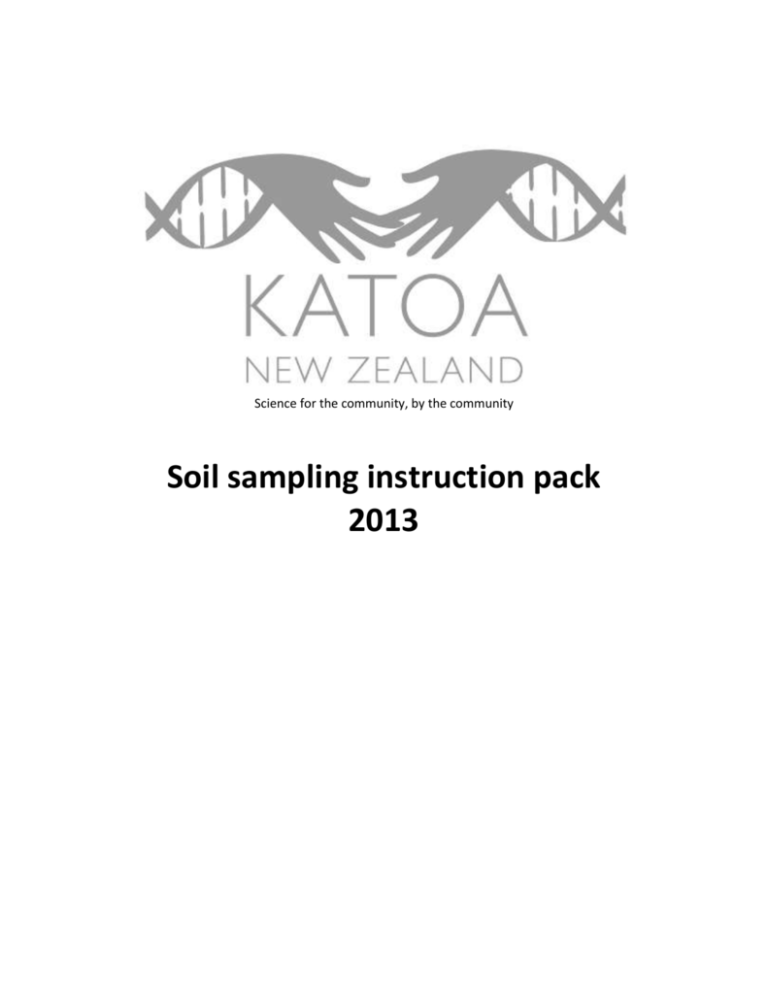
Science for the community, by the community Soil sampling instruction pack 2013 Our sponsors Contents Our sponsors ................................................................................................................................................. 2 When and what should we sample? ............................................................................................................. 4 Iwi consultation for sample collection .......................................................................................................... 4 Sample collection .......................................................................................................................................... 5 How to label your sample tube. .................................................................................................................... 6 Sample collection form ................................................................................................................................. 7 Where and how to send your sample........................................................................................................... 8 When and what should we sample? Sample site choice is ultimately up to you. Please pick something you are interested in – it can be fields, marsh land, forest, farm land or even just your backyard. If you were involved in the 2012 project, and it is possible, could you please sample at the same site as last year. We would appreciate it if you could sample your selected site during the week starting the 6th of May. Ideally it would be great if you could sample at 1pm on Thursday the 9th of May. If you can’t sample during this week, then please sample as close to this time and date as possible. Iwi consultation for sample collection It is important to obtain local iwi permission for the collection of the soil sample for DNA extraction and sequencing of samples that you obtain from sites that have cultural significance. Please have your students consult with your local iwi and tell them what our project is about – in your own words. It is important to stress that there is no commercial outcome from this project rather it is strictly educational. Please get in touch with Justin M. O’Sullivan if you are unsure who or how to contact your local iwi, or if the iwi have questions that you cannot answer. Justin M. O’Sullivan email Justin.osullivan@auckland.ac.nz. Please enclose a letter from the local iwi, with your sample, stating that they are happy for the sample to be collected, the DNA extracted, and limited sequencing to be performed to enable the identification of the bacteria that are present. Sample collection You will need to obtain a 50 cm length of 50 cm (long) x 5cm (internal diameter) Marley Optim DN50 DWV 07:11:22 05:05 tubing (or similar) for sampling. This is just spouting downpipe and can be obtained from PlaceMakers, Mitre 10, or similar. The pack that we sent you contains 4 sample tubes and gloves. Please take up to 4 samples from different sites. 1. GLOVES MUST BE WORN AT ALL TIMES DURING SAMPLING 2. A 50mL falcon tube will need to be labeled with the date and school name on the lid and side of the tube in permanent pen as shown in the figure below. 3. Soil corers, 50 cm meter in length by 5cm, will be used to extract the soil sample. Insert end of core into ground at the required sample site and hammer gently until the core has reached a depth of 30cm. (Hint: mark the depth on the side of the corer before you begin to hammer it in.) 4. Gently remove the corer making sure sample doesn’t fall out the bottom. 5. Immediately place a thermometer into the end of the soil sample. Read the temperature. 6. Collect 15-20 g of soil sample by pushing the open 50 ml tube into the bottom of the core. Make sure the tube is only opened for the minimum required time and the samples are not touched by hands. 7. The sample should be stored at 4˚C until it is posted to The Liggins Institute. Please see the sampling video (http://www.youtube.com/watch?v=9WiGKkt8IaU&feature=youtu.be) for an example of sampling protocol. Note: the corer and thermometer should be sterilized by washing with boiling water prior to use. Once washed do not touch the internal surfaces of the corer or the probe region of the thermometer with bare hands. This will prevent human contamination. School name Sample ID Date (dd/mm/yy) How to label your sample tube. Labelling of 50mL falcon tube with school name, school number and sampling date number, and date. Please complete one sample collection form (next page) for each sample you collect. Sample collection form Teacher’s name: School name: Sample ID: Sampling date: Location*: GPS coordinates: Or Map reference: Or Street address: Number Street/Road City/Town Postcode Site information: Sample temperature at time of sampling: Annual rainfall: Altitude: Photograph (electronic- please attach and name file with your school number. Please include one of you all doing the sampling) Other notes&: * GPS coordinates are preferred where ever possible. They can be obtained from many modern mobile phones. & If known, please include any information you have about the site history. For example, was it a brown field site, how often is the site is cultivated, fertilized etc… What do you do with your sample once you have it? Please wrap the 50 ml tube containing the soil sample in bubble wrap and place in the courier bag we provided. Address envelope to: Liggins Institute University of Auckland 85 Grafton Road Auckland 1023 Attn: Justin O’Sullivan Please keep this refrigerated until you can get it in the post to us. Thank you.








